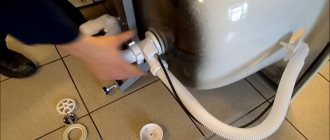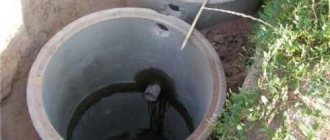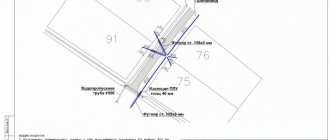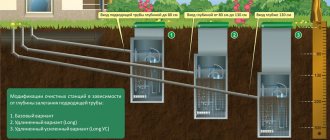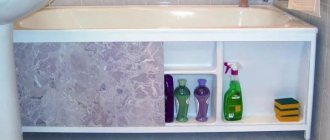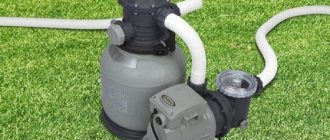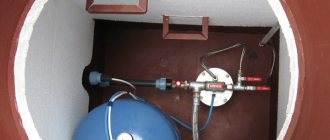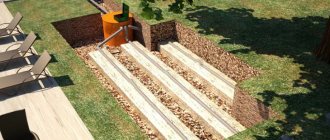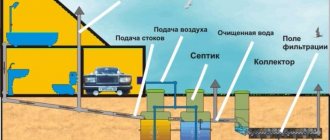Is it possible to install water meters in an apartment or private house yourself?
The law does not prohibit installation work on installing hot and cold water meters yourself.
On July 1, 2013, Federal Law No. 261 on the mandatory universal installation of water meters came into force.
If the average person decides not to involve craftsmen, there is an opportunity and desire, then there is no clear wording of the prohibition in this Resolution.
There are certain nuances, the observance of which will protect the private owner from mistakes and troubles:
- The purchase of metering devices is carried out only in specialized companies that have a license. Each meter must have a technical passport.
- The quality of installation work is checked by Vodokanal services or special organizations authorized to verify metering meters.
- On the day of installation, a necessary condition is to turn off the water supply through the riser on all floors of the building, agreed with the residents and the building manager of the high-rise building;
- After installing the devices, all possible problems (malfunction, leakage) are resolved and compensated at the expense of the apartment owner.
If the above conditions are not met, the water utility has the right:
- do not allow water meter registration;
- if there is a risk of an emergency, dismantle;
- fine the unauthorized installer.
Important! When installing hot and cold water meters without skills, it is better to use professional repair and maintenance services.
To avoid unpleasant moments, neighbors are warned in advance about temporary inconveniences when the water is turned off.
What meters are installed in wells
Not all water meters are designed for installation in wells, only wet ones. These are moisture-resistant metering devices that do not require additional waterproofing. They can be installed even in open areas of water supply. However, when installing a wet walker in a well, it is necessary to take into account a number of technical nuances
- The technical data sheet of the metering device must state that it is approved for use in low temperature conditions. Most household water meters are operated in conditions from +5 to +50°, which means that their installation in a well is unsafe, can distort readings, and also lead to premature failure of the water meter.
- Make sure that the well is protected from moisture: groundwater and rainwater. If the well is flooded, this will make it difficult to take readings.
- Seal the meter not with a metal cable, but with a sealing line. High humidity causes corrosion and damages the integrity of the cable.
Pros and cons of self-installation
The advantages of self-installation are obvious:
- saving money on installation of devices;
- the ability to determine the date and time of installation at a convenient time for the owner of the apartment or house;
- independent choice of metering meter model based on ratings and reviews.
Disadvantages of DIY installation:
- risk of poor-quality installation of metering devices;
- increasing the likelihood of an emergency (especially in an apartment building);
- double costs associated with forced dismantling and re-installation of metering devices.
The owner must make a conscious decision: calculate the pros and cons of “home” installation of a water meter for hot and cold water consumption.
Installation of a water meter in a well and judicial practice
On this basis, the Arbitration Court of the Stavropol Territory rejected the claims of the Municipal Unitary Enterprise "Gorvodokanal" of the city of Lermontov against the residents of an apartment building who refused to move the communal water meter from the water metering unit located in the basement of the house to a street well.
The company tried to justify the legality of its demands by referring to paragraph 5 of Article 13 of the Federal Law of November 23, 2009 No. 261-FZ “On Energy Saving...”, which obliges homeowners to install and put into operation water meters at the border of the balance sheet.
Principles for choosing a metering device
In order not to make a mistake before purchasing a water meter, you need to take into account the accuracy class of the device . The accuracy of water flow measurements depends on it, but the cost of the water meter will be higher.
Which one should I buy for DHW?
When purchasing a device for domestic hot water, most often the choice is made on tachometer devices.
Turbine models are used for pipelines with a diameter of 50 to 200 mm. For narrower sections (up to 40 mm), vane meters are used.
We advise you to adhere to the following features:
- pressure in the device is from 16 atmospheres or more;
- operating heating temperature range from 5 to 150 degrees Celsius;
- maximum sensitivity is equal to the average hourly passage of a volume of water;
- The permissible error should not exceed 5%.
On a note! The metering device must bear the manufacturer's seal. The technical passport contains the device number, test date and QC stamp. The seller adds information about the date of sale and the seal of the seller-store to the details.
ITELMA WFW20.D110
In terms of reliability and technical characteristics of mechanical meters, ITELMA WFW20.D110 (a joint German-Russian brand) is in 1st place.
Advantages:
- 6 year warranty;
- affordability.
"DecastMetronic" VSKM 90-15 DG
The vane water meter is convenient for main pipelines with low energy consumption.
Advantages:
- 10 year warranty;
- easy to repair;
- simple design.
The main disadvantage is that there is no mounting hardware for installation.
Zenner ETWI-N DN 15
The German model is one of the best mechanical universal water meters. The device uses a multi-jet operating principle.
Advantages:
- high build quality;
- accuracy of flow measurement;
- there is a function for transmitting values via Wi-Fi;
- long term - 12 years.
The only drawback is the price is higher than average for water meters.
It is recommended to take into account individual characteristics:
- what is the state of communications;
- approximate composition of water (hard or soft);
- availability of funds for purchase;
- indicators of heating water entering the system.
To assess financial capabilities, it is better to check with special organizations the approximate cost of installing equipment. Installing a water meter on your own is a troublesome and responsible undertaking.
Which one to buy for cold water supply?
Main characteristics of the cold water meter: temperature range up to 30 degrees Celsius. A distinctive feature from the GW device is the calibration interval. The difference will be in the timing of verification; usually a hot water meter requires more frequent verification.
For a water meter for cold water, the interval is 6 years, for hot water - from 4 to 6. High temperatures wear out the meter parts faster.
The color of the housing differs; for cold water, blue ones are often used; for hot water, a red meter is required. The diameter of the pipeline is taken into account, options are possible from the minimum (15 mm) to the maximum - 20 mm.
Important! When installing a water meter, the following rule is followed: a meter designed to measure the flow of cold liquid is placed on a cold pipe. It cannot be used for hot water!
Betar SHV15
In terms of operational capabilities for cold water, the Russian Betar SKHV15 meter is distinguished. There are three installation options: vertical, horizontal or at an angle. Permissible liquid temperature +5….+40 degrees Celsius, maximum pressure 10 Bar.
Advantages:
- with warranty 6, the service life can reach 18 years;
- low cost;
- convenient to install and operate.
NORM SVKM-25X
More expensive in price, but optimal in performance. It deservedly ranks 1st among premium models.
Advantages:
- brass body with anti-corrosion coating;
- compact, easy to install;
- there is magnetic protection against interference with the operation of the device;
- pulse output.
Practice shows that it is better to choose tachometer models for an apartment or private household . They have an optimal balance of cost, quality, and ease of use.
Documentation
Upon completion of all work related to the installation of the unit, the parties draw up a report that confirms that the project and conditions have been met, and the finished unit has been handed over/accepted.
The document contains information about the device, installation date, company information and consumers. The act is signed by all parties. Additionally, the tenant must submit the following documents:
- those. equipment passport, which contains the primary consumption and installation date;
- certificate that the inspection was carried out and the equipment is suitable for use (additionally indicate the date of the next inspection).
Before testing, the equipment is disconnected from the system and transported to the company. This work can be carried out by the installation company that installed the water meter, and in the future will remind you about the timing of the inspection.
This is the standard procedure for performing equipment installation work. The process may vary slightly in individual regions. There is a clear advantage to using the services of specialized companies. You will be able to save your time, because the specialists themselves will develop the project and control the conditions for performing the specified work.
Differences in mounting DHW and cold water devices
It is permissible to install a DHW meter on a cold pipe; in other words, it is permissible to install two red ones for hot and cold water.
Note the advice of practitioners! You can install both red meters, but for convenience it is better to separate them so that there is no confusion when collecting readings.
There are houses in which the hot water supply system operates according to a two-pipe system. To install a water meter on a hot water supply, you need a bypass valve. Otherwise, the meter will count excess water consumption.
For cold water meters, rubber gaskets are installed; for domestic hot water, the private owner must buy paronite gaskets.
Where can a water meter be installed?
Installation begins with its selection and purchase, taking into account current standards. Then they decide where and how to install it according to the requirements, which mention that the meter should be inserted no further than 20 cm from the entrance to the central water supply main.
This allows you to minimize the possible unauthorized tapping of homeowners into the water supply system up to the meter and eliminates the theft of resources. The installation of a water meter in a private house is carried out so that the water meter can take into account the full water consumption of the cottage (house) throughout the entire territory of the site, and not just in the building itself .
In the well
The meter can be installed outside the property, in a well equipped with a well:
- purchase an IPU for operation at low temperatures, which must be specified in the technical passport;
- make sure that the well is not flooded with groundwater or runoff after intense rainfall, otherwise taking readings will be difficult;
- The sealing is carried out with a fishing line; it does not rust, unlike a standard metal cable.
The reason for the requirement is to eliminate unauthorized connections bypassing the water meter, that is, to the place of its installation. Referring to this, utility services require those households that have already installed a water meter to move them off site.
Water consumers from private households (who already have a water meter installed) may not comply with this transfer requirement - there is no legal basis for this. After all, the owner has in his hands all the documents confirming the legality of the installation of a water meter and acceptance by authorized services.
Video: “Assembling a water meter assembly with installation on polyethylene pipes in the well of a private house.”
- Standard pit dimensions are 1.2x1.2x1 m.
- Don’t forget to insulate the walls approximately 25-30 cm.
- We get a hole 1.7x1.7x1.3 m.
- Or we make it into rings.
In the house
You can install a cold water meter on the pipeline at the entrance to the house. Installation is carried out in most cases in the basement. The ceiling above the water meter point must be at least 1.8 m. The room must be illuminated to take readings.
- the room temperature should not be lower than +5 0 C throughout the year (except for wet-type water meters “wet walkers”);
- the lighting level must be sufficient to check the meter and take readings from it;
- presence of a safe seal, otherwise the meter will have to be checked again.
Installation diagram and holes for wire.
Water meters have a factory seal, which confirms the accuracy of the readings. If the seal is broken or damaged, the owner will have to order verification at his own expense so that the management company (MC) will accept the meter. These are additional costs from 500 to 2000 rubles.
How to install correctly: step-by-step instructions
Before starting installation work, the private owner needs to write an application to the local Vodokanal office.
After receiving the technical specifications for the water meter, a model is selected and an metering device is purchased. They check the presence of the certificate and seal impressions.
It is necessary to have water meters checked by the Vodokanal management, private licensed companies or the Housing Office.
The meter is left with a technical passport, in which, upon successful verification, all fields are filled in and the organization’s stamp is affixed. Indicate the day of the upcoming seal on the device after installation is completed.
The meter has an instrumentation - seal. Its safety is a guarantee that the water meter will be accepted by Vodokanal. There are situations when the plant seal is broken, the water meter will be taken to the instrumentation, but without the latter’s seal the indicator data will not be taken into account for calculation.
The principles of installing a water meter in a private house and apartment are largely similar. Let's look at them.
Mounting kit
To install the device you need the following parts:
- Stopcock. Brass ball ones are more often used, if the pipeline is made of propylene, a plastic tap is installed. It must be new and of high quality to eliminate the risk of failure. The private owner must control the position of the shut-off valve. Two positions are allowed: “open”, “closed”. If it is not fully opened, it will quickly wear out and fail.
- Water purification filter with a mesh for large contaminants. There are two types - right angle and oblique. Periodically, the mesh needs to be cleaned of accumulated dirt.
- Check valve. So that the device does not start to “wind” back in a situation where the water supply to the system has stopped.
- Water meter.
For installation, the private owner independently purchases a check valve for each pipeline. To make the connection airtight, sealing materials are needed.
It is more convenient to use TangitUnilok threads with lubricant made from silicone, paste, or flax, tow. Connecting elements - fittings - will be required to make the transition from metal to metal-plastic.
Special tools required:
- scissors for cutting pipes made of metal or polypropylene,
- “iron” for welding joints and a set of keys.
If work is carried out with metal pipes, you need a grinder and equipment for cutting threads.
How to determine the location?
There are general rules for choosing a location:
As close as possible to the point of pipe entry from the main. The site is chosen horizontal to prevent water intake past the device. The place of attachment is determined so that the inspection services do not have unnecessary suspicions.- In an apartment, a meter is often installed near the toilet; if pipes pass inside the floor structure, the water meter is mounted in the bathroom.
- For private housing construction, the water meter is installed near the outer wall at a distance of no more than 200 mm from the exit point of the pipeline.
- If there is a well in the area with a pipe leading out from the main, a major installation is carried out. The well is covered with a lid (metal) and sealed. Unsealing is possible in case of fire or emergency. In other options, the seal is removed only in the presence of an official from the Vodokanal.
The water meter will be able to give correct readings if the risk of turbulence flows is reduced. Before the counter 45 mm, after - 15 mm. It is mandatory to install a valve in front of the metering device to shut off the water supply.
Installing a water meter
After purchasing all the necessary parts and components, proceed directly to installing the water meter.
The installation procedure includes:
- It will be easier if all the parts are lined up in one line , starting from the check valve and ending the chain with a shut-off valve. The manufacturer provides arrows, check that their direction is the same.
- It is recommended to make a “dry” connection in order to calculate the number of turns in advance. Usually there should be up to 5 pieces. During installation, remember the position of each element. Then they unwind it, take the sealing material, and wind it onto the faucet filter with the required number of turns. The sealant is placed so as to cover the entire thread.
- Shutting off the water supply . It is necessary to completely turn off the liquid supply through the main water supply. If it is not possible to close the outlet from the riser, it is necessary to block the flow of media through the cold and hot water risers.
- After completing the connection of all elements, insertion is carried out . For an apartment building, you need to call an inspector from Vodokanal in advance. The installer measures the length of the structure. An equal distance is cut off on the pipe; it is better to place a water container at the bottom.
- Fastening the structure to the pipe. If the pipe is made of metal, you need a thread and a clear measurement of the length to cut the excess section. It is easier to mount the meter on polypropylene pipes. Additionally, fittings are required to make connections between different materials.
Visual installation instructions can be seen in the video:
Direct installation is not so complicated and does not require time. The most difficult thing is to go through all the approvals and obtain documents for permission to install water meters.
What to do after?
The final stage after installation is a mandatory performance check. To do this, perform the following steps sequentially:
- turn on the water supply;
- gradually open the ball valve;
- check if there is a leak.
If everything went without a water leak and the meter is working normally, they call a Vodokanal inspector . After the inspection, the water meter is sealed, registered and marked in the device’s data sheet.
The private owner must receive a document confirming the acceptance of the device into operation, a technical passport with a mark on the date of the seal. Calculations of meter readings are carried out from this day.
You cannot install the seal yourself or invite private craftsmen . The sealing procedure is carried out after an official application for acceptance of the device for measuring water flow.
Important! Until registration has been completed, water meter readings cannot be taken to calculate the cost of water supply services. It is better to do the procedure immediately after successful testing of the metering design.
Registration
Before carrying out work, you need to coordinate the process with the water utility department, which will provide technical specifications for the equipment. Then you need to purchase the device itself (this should only be done in specialized stores with a license).
To shut off the riser, you need to call a plumber from the organization that maintains your high-rise building. This procedure should be free of charge. One, in most cases, people pay extra to a specialist for the work done. You can avoid unexpected costs by drawing up a statement to the head of the housing office.
The installation is sealed by a representative of the water utility. But in practice this is often done by representatives of the housing office. It depends on who is involved in water supply and water heating. The owner of the apartment building indicates which organization provides the services, then the specialist seals the meter. In the future, utility bills are paid not according to consumption standards, but according to equipment readings (every month).

